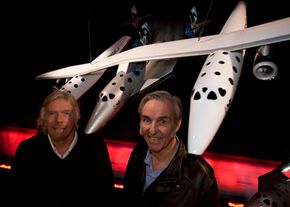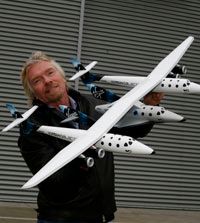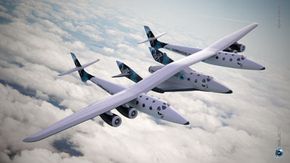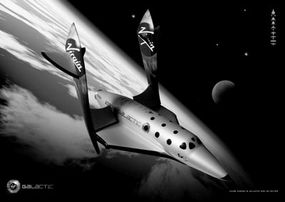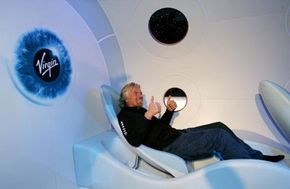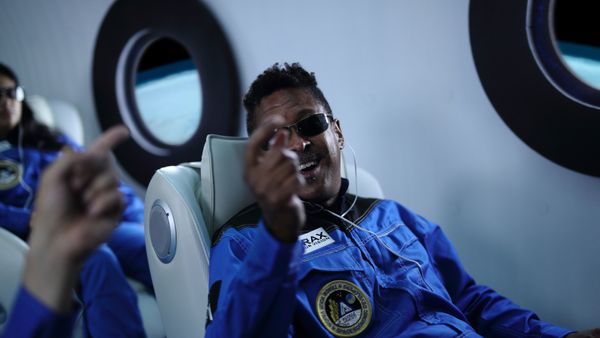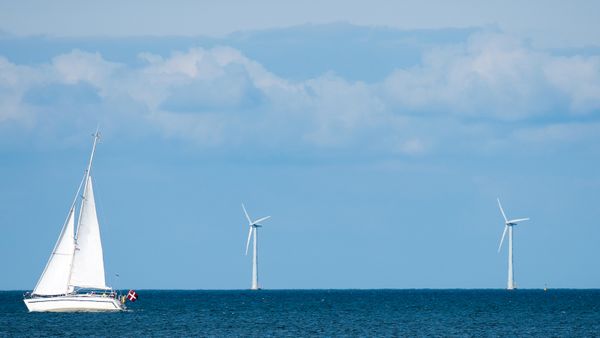When you watch a space shuttle launch or see old video clips of the Apollo moon landings, you may dream of flying into outer space. In the past, that privilege has been reserved for highly trained astronauts and a few high-paying passengers. But the dream could become a reality for more people as a new space liner called Virgin Galactic sets up shop. You'll just need to scrape up about $100,000 first. True, that's not cheap, but it's a whole lot better than the $25 million that other space tourists have paid.
Space Tourism Image Gallery
Virgin Galactic is the brainchild of British billionaire Sir Richard Branson. He has partnered with Burt Rutan, the designer of Ansari X Prize-winner SpaceShipOne, to build a fleet of spacecraft that will carry paying passengers into outer space and back.
Advertisement
Virgin Galactic has licensed the designs and technologies of SpaceShipOne to create two new ships, SpaceShipTwo and WhiteKnightTwo (the turbo jet that carries SpaceShipTwo into the air). The ships were unveiled in January 2008, but passengers have been signing up since 2005. And sometime around 2010, they'll finally be launching into space.
SpaceShipTwo takes passengers on a wild two-and-a-half-hour flight, blasting them 360,000 feet (109,728 meters) above the Earth and giving them a four- to five-minute zero-gravity experience (and, as an added bonus, passengers officially become astronauts by traveling more than 50 miles (80 kilometers) into space). After the brief suborbital flight, the spacecraft re-enters the atmosphere and glides back to Earth.
Both Rutan and Branson believe that the success of their designs has opened the door to space tourism, that tourist flights can be done safely and that the space tourism industry will be successful. So, how do these new spaceships work, exactly? How safe are they? And how do you score a spot on a Virgin Galactic flight?
Advertisement
